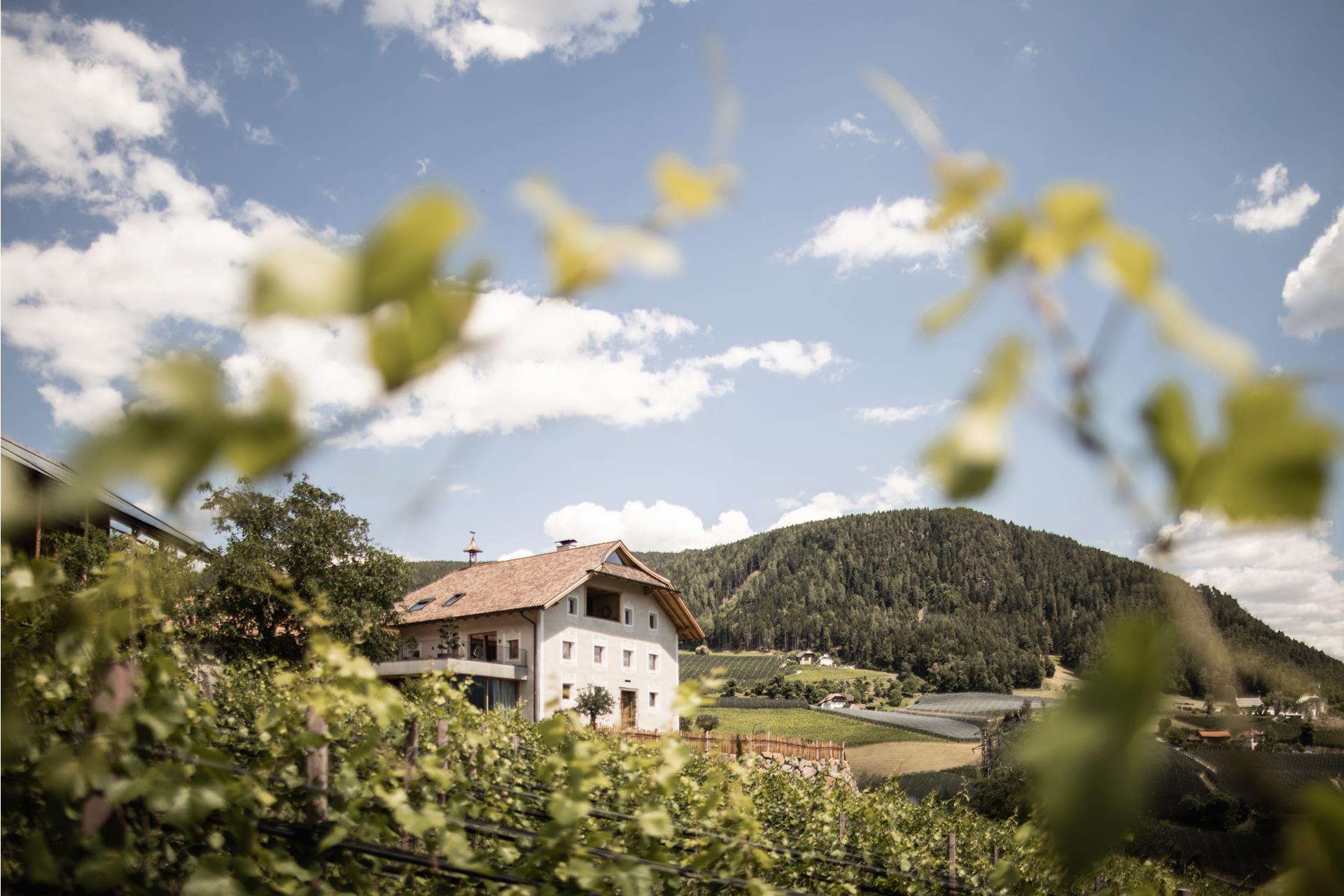Originally in the possession of the church, the Moarhof in Postal has belonged to the Pertoll family since 1923. Today it is Florian Klotz Pertoll who is at the helm at the estate. He already earned his stripes in fruitgrowing and winegrowing operations in Friuli at the age of sixteen, and he brought what he learned there into his father’s operation. “My father recognized that, and from that moment onward, he supported me in professionalizing the operation,” Klotz Pertoll says today.
Professionalizing also includes the expansion of the estate through the leasing of additional areas of cultivation. Thus today, the Schiava grapes, which are processed into the calling card of the Moarhof, no longer originate from the porphyry soils in Postal, but rather from the loam slopes in San Valentino. “They are grown very traditionally on pergola trellises,” Klotz Pertoll says, “because Schiava cannot be exposed too long to full sun.”
Once they are in the winery, the wines of the Moarhof in Postal – which in addition to Schiava also include Cabernet Sauvignon, Lagrein, and Merlot – are first matured in stainless steel tanks and then in large oak barrels which lie in the historical vaulted cellar. Where else?
































